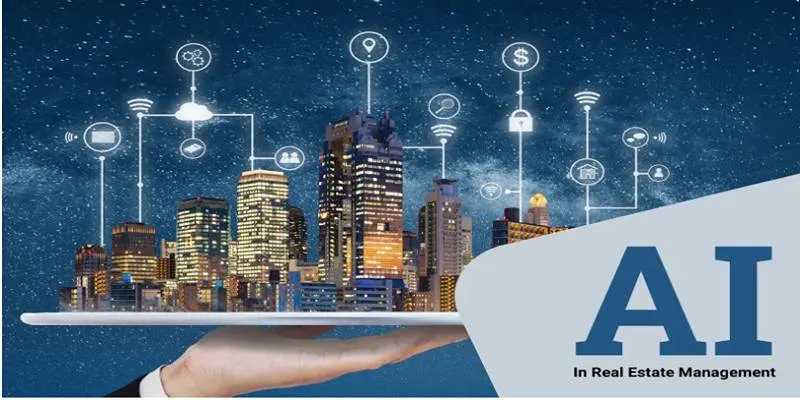AI voice assistants are transforming businesses across industries. By streamlining workflows, enhancing customer experiences, and automating processes, they boost efficiency and accessibility. From retail to healthcare, these intelligent tools are making companies more agile, productive, and user- focused in a competitive world.
Enhancing Internal Operations

Streamlined Task Management
AI voice assistants simplify task management by helping employees organize schedules, set reminders, and access documents hands-free. Seamlessly integrating with enterprise tools like calendars, CRMs, and task managers, these systems eliminate time-consuming navigation between applications, driving greater efficiency in daily operations.
Voice-Activated Knowledge Repositories
Voice assistants enable employees to quickly retrieve information from internal databases, policy documents, and procedural guides—all without lifting a finger. This hands-free access not only saves time but also ensures consistent and accurate information sharing across teams.
Real-Time Workflow Assistance
In industrial settings, voice-enabled systems provide critical real-time support for tasks such as maintenance procedures, safety checks, and inventory management. Workers can stay focused on hands-on responsibilities while receiving spoken instructions or logging updates with simple voice commands.
Transforming Customer Interactions with Voice Assistants
Voice assistants in call centers are redefining customer service by leveraging past interactions and user preferences. This innovation enables faster query resolution, enhances customer satisfaction, and seamlessly directs complex issues to human agents when needed.
24/7 Multilingual Accessibility
AI-powered customer service platforms now provide round-the-clock, multilingual support, making assistance readily available anytime, anywhere. By expanding accessibility and reducing response times, businesses can serve diverse global markets without inflating operational costs.
Modernizing Interactive Voice Response (IVR)
Outdated IVR systems are being replaced by AI-driven voice interfaces capable of understanding natural language. These advanced systems let customers articulate their concerns in simple, conversational terms—eliminating frustrating menu navigation and elevating the overall user experience.
Streamlining Decision-Making Processes
Executives can now harness voice commands to instantly access business intelligence dashboards, review sales figures, or track key performance indicators (KPIs) in real time. This on-demand access to critical insights empowers quicker, more informed decisions.
Automated Meeting Summaries and Follow-Ups
Voice assistants with advanced speech recognition capabilities can transcribe meetings, identify key action items, and schedule follow-ups automatically. This not only reduces administrative tasks but also ensures that no important detail is missed.
Voice Technology Across Industries
Healthcare
Voice assistants are revolutionizing healthcare by enabling medical professionals to document patient records, access diagnostic data, and receive procedural guidance—all without the need for a keyboard or touch screen. This hands-free approach allows clinicians to remain focused on delivering quality patient care.
Financial Services
In banking and financial services, AI-powered voice solutions streamline customer interactions by handling balance inquiries, transaction history requests, and loan application updates. Internally, advisors leverage voice commands to quickly retrieve client information and compliance documentation, enhancing productivity and service delivery.
Manufacturing
On the factory floor, voice assistants play a critical role in ensuring smooth operations. They support machinery inspections, provide real-time reporting, and guide technicians through complex tasks. Workers can interact with control systems using voice commands, maintaining production workflows without disruption.
Seamless Integration with Enterprise Systems
Integrating voice assistants with ERP platforms provides instant access to critical data, such as order statuses, supply chain updates, and production schedules. This real-time visibility enhances coordination across departments, improving efficiency and decision-making.
Customer Relationship Management (CRM)
Voice commands transform CRM workflows by enabling sales teams to log interactions, set reminders, and update leads effortlessly—eliminating the need for manual data entry. This streamlines processes, boosts productivity, and ensures accurate record-keeping.
Human Capital Management (HCM)
HR teams can leverage voice assistants for tasks like employee onboarding, benefits inquiries, and navigating training modules. Employees receive personalized, instant responses to their questions, reducing wait times and improving overall support.
Security and Compliance Measures
Voice recognition technology enhances security by verifying user identities through unique vocal patterns. This not only reduces the risk of unauthorized access but also provides a seamless and convenient login experience.
Data Encryption and Access Controls
Enterprise AI voice assistants are built with robust encryption protocols and stringent access controls to safeguard sensitive information. Customizable configurations ensure compliance with industry standards and internal policies, offering a secure solution tailored to your needs.
Auditability and Transparency
Voice interactions are fully logged and auditable, ensuring complete traceability and fostering transparency. This feature is particularly vital in highly regulated industries like healthcare and finance, where accountability is critical.
Challenges and Key Considerations
Ensuring Data Privacy
Protecting user privacy is paramount. Organizations must obtain clear consent, minimize data retention, and transparently explain how voice data is utilized. Establishing robust and transparent policies not only builds trust but also ensures compliance with global data protection regulations.
Enhancing Voice Recognition Accuracy
Accurate voice recognition can be hindered by factors like accents, background noise, and specialized industry terms. To address these issues, continuous AI model training and customization for domain-specific vocabularies are essential. These efforts significantly improve recognition performance across diverse use cases.
Driving Adoption and Managing Change
Successfully implementing voice assistants requires a strategic approach to change management. This includes offering training sessions and showcasing tangible benefits to users. Encouraging early adoption among tech-savvy teams can create momentum, paving the way for broader acceptance across the organization.
Future of Voice AI in Enterprise
****
Seamless Integration with Generative AI
The next generation of voice assistants will incorporate generative AI to deliver richer context, dynamic summarization, and on-the-fly content creation. These advancements will significantly boost productivity, particularly in knowledge-driven roles.
Enhanced Multimodal Interfaces
Voice technology will merge with visual interfaces, gesture recognition, and augmented reality, creating immersive multimodal experiences. For instance, an engineer could view detailed schematics while receiving audio instructions, streamlining complex workflows.
Industry-Specific Customization
Voice assistants will become increasingly tailored to the unique demands of specific industries. From legal research to architectural design and supply chain analytics, these tools will offer highly specialized and context-aware support.
Conclusion:
AI voice assistant technology is reshaping enterprise operations through efficiency, automation, and intuitive interaction. As the technology continues to mature, its impact will deepen across industries—enhancing productivity, improving service delivery, and unlocking new opportunities for innovation. Enterprises that embrace these tools strategically are not only streamlining operations today but also positioning themselves for a more responsive, intelligent future.
 zfn9
zfn9























